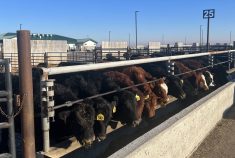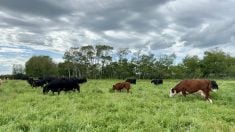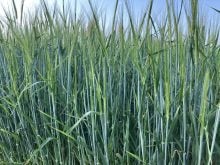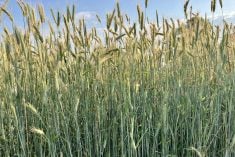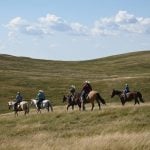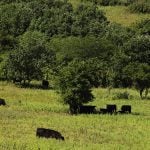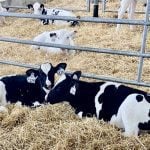Diets fed to finishing cattle in Western Canada typically consist of more than 80 per cent barley grain and less than 15 per cent forage on a dry matter (DM) basis, along with minerals, vitamins and byproducts. These diets are inherently dry, enabling separation of individual ingredients at the time of delivery and as cattle eat. Additionally, the particle size distribution of the mixed rations can be quite broad, as forages typically provide large particles, processed barley contributes medium-sized particles, and finer components, such as barley fines and the mineral-vitamin premix, tend to settle into the smallest fraction. The dry diets and the range in particle size create an opportunity for cattle to sort dietary components.
Cattle naturally sort their feed based on a variety of factors such as palatability, forage content, particle size, presence/absence of mould or spoilage, as well as other factors. In a feedlot setting, sorting and consuming specific dietary components can lead to differences in dietary composition across the bunk and for cattle that eat after sorting has occurred. In this case, it is possible that some cattle consume a higher proportion of forage and consequently a lower-energy diet, while others select for smaller particles leading to a higher-energy diet with a lower-forage content.
Such diet variability has been suggested to negatively influence the performance of cattle, particularly the consistency of individual performance within a pen. For example, cattle consuming a diet higher in forage than formulated would be expected to have lesser average daily gain (ADG) and poorer gain-to-feed. Those consuming a diet containing more grain than formulated may be at increased risk for digestive disorders such as bloat or acidosis or may simply grow faster and more efficiently. Additionally, uneven intake of the mineral-vitamin premix can result in inconsistent medication consumption, including essential additives such as ionophores and other feed additives. It is largely assumed that if all the feed is consumed and multiple feedings are offered, each animal in the pen will have received and consumed the same diet. However, this assumption overlooks the timing of feeding and feeding behaviour where cattle may sort through the feed while eating, leaving the subsequent cattle to consume a diet with a different diet composition.
Read Also
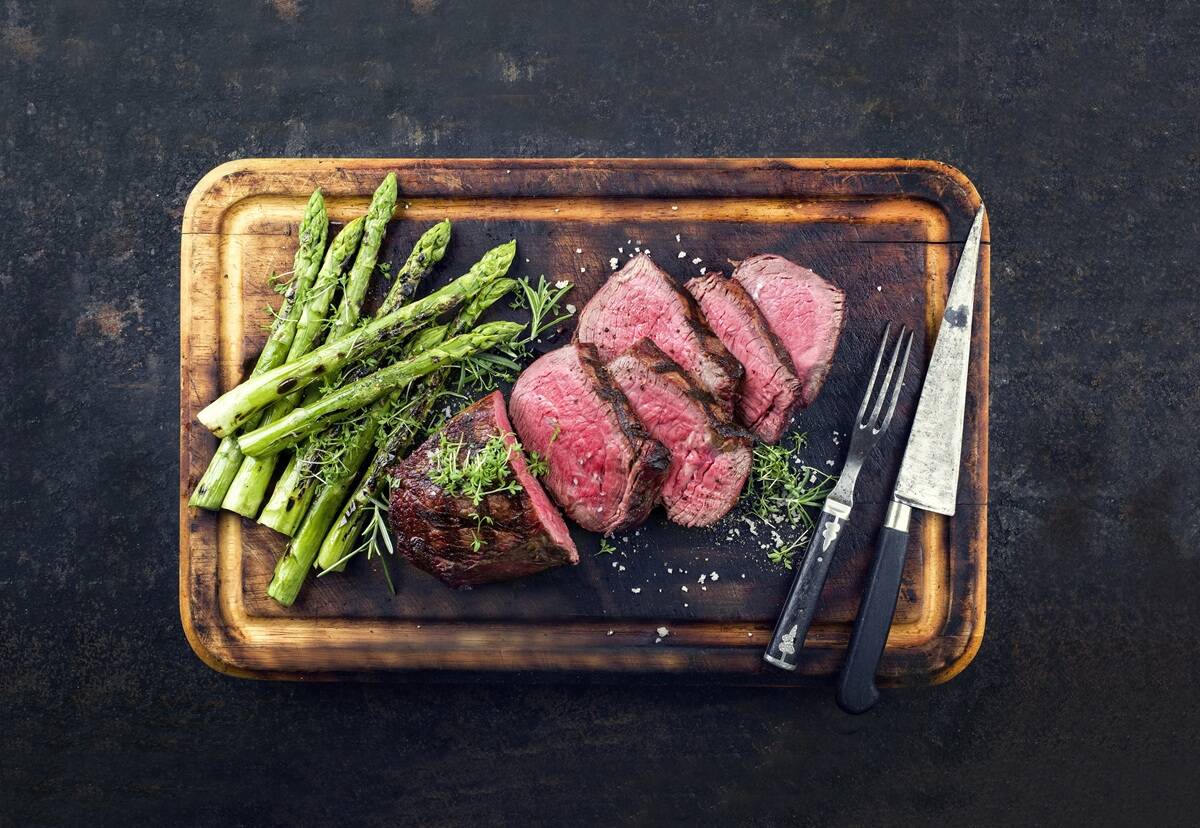
Building demand together: The impact of Canada’s beef import levy
The beef import levy has become a central tool for ensuring balance in Canada’s beef industry
One potential solution to reduce sorting is to incorporate binders into the diet. Binders, such as molasses, vinasses, liquid whey or distiller’s solubles, help ingredients adhere together. This limits cattle’s ability to selectively consume or refuse components of the diet while eating. Water can also be used as a binding agent in diets. While adding water to a total mixed ration (TMR) is a common practice in dairy operations to improve consistency in intake and limit sorting, its use as a binder in high-grain finishing diets has not been studied.
In research conducted by a University of Saskatchewan M.Sc. student Catherine Seidle, the effects of using water as a binder in barley-based feedlot diets were evaluated in two studies. In both studies, the amount of water added was proportional to the weight of the barley grain with water inclusion rates of zero, 10, 20 or 30 per cent. The water addition resulted in total dietary dry matter concentrations of approximately 80 (control), 75, 70 and 65 per cent. In the metabolism study, results demonstrated that increasing the amount of water increasingly prevented cattle from sorting their diet and reduced the ability of cattle to avoid eating the small particles. As expected, adding water did not affect nutrient digestibility.
In the second study, conducted at Agriculture and Agri-Food Canada (Lacombe Research and Development Centre, Alberta), 120 steers were arranged into one of 20 pens (six steers/pen) and provided diets with water included at zero, 10, 20 or 30 per cent relative to the weight of the barley grain. This study was designed to evaluate if adding water would influence growth, feed efficiency and variation in carcass merit performance within a pen. Consistent with the first study, adding water reduced steers’ ability to sort the diet. There were also no differences among treatments for ADG, gain-to-feed or carcass characteristics. However, variability in the marbling score was reduced as water inclusion in the TMR increased. This suggests that, while adding water did not improve overall marbling, the response for steers was more consistent as more water was added. The reduced variation supports the concept that preventing dietary sorting can help improve consistency in nutrient intake among steers in the same pen.
Based on the results of these studies, the optimal dietary DM was around 70 per cent for finishing diets. However, the specific proportion of water required to achieve this target will vary depending on the DM of the dietary components. When adding water to the TMR, water quality should also be considered, as poor-quality water could negatively affect cattle health and performance.
The authors thank SaskBarley, SaskMilk, and NSERC-Alliance for funding this research. For more information, please reach out to [email protected] or [email protected].



